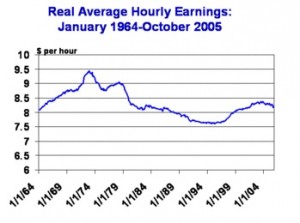
While moving through your career there are landmines to avoid and one of them is what I label, “The Swinging Pendulums and Treadmills.” There are two types of corporate management initiatives, one is structural pendulums while the other is managerial treadmills, and I will explain them along with their danger.
Structural pendulums are corporate tactics that continually swing from one extreme to the other. For example, a company will have a more decentralized hierarchy and then to “improve” the company it will begin moving to a more centralized hierarchy. Then to “improve” upon the centralized hierarchy it will begin moving back to a more decentralized hierarchy. Back and forth, changing with each new management team that arrives, this is one of the many pendulums in business structures that occur over many years. Some other structural pendulums include: functional department silos vs. department cross-training, internal promotions vs. external promotions, conglomerate vs. single industry focus, outsourcing vs. in-house, acquisitions vs. build your own, open floor plans vs. offices with doors, team tasks vs. individual autonomy, and many others.
Managerial treadmills are fads created by consultants that are sold as ways to improve a company but mostly end up a distraction that consumes time and resources from normal operations. You can recognize them from several attributes: one size fits all, promises of happy and motivated employees, can only be implemented by expensive consultants and company-wide training. There are rare occasions where these temporarily help a company but most of the time fads are abandoned within a couple years. You’ve likely heard many of these management fads: quality circles, six sigma, vision statements, core competency, management by consensus/objectives/walking around, benchmarking and best practices, yet another new type of “matrix”, process re-engineering, continuous quality improvement, performance ranking, customer satisfaction data mining, and endless others that appear every year.
In your career you will be involved in both structural pendulums and managerial treadmills. Don’t be upset when they show up, you know that more of them will be coming in the future. The best way to handle a structural pendulum is to go with the flow because these may last for many years. If the company is centralizing you need to be willing to help or your job will be in jeopardy. Contrarily, avoid becoming too attached to management fads, just be positive, do the paperwork or whatever you are required to do, and then get back to your primary job. A potential career killer is to become too engulfed with a management fad or volunteering to “head up a task force” on these fads. This is because fads are short term, lasting only 6 months to a few years before they are abandoned for a newer and shinier management object. If you align yourself too closely to these fads, then when it is abandoned, so is your skill or even your job.
One management professor called these management initiatives, ‘painting the garbage cans.’ “Every once in a while management paints them a different color, thinking it will solve all their problems, and when it doesn’t, they then move on to a different color.” So be careful about identifying yourself with one of the colors because it will certainly change and you don’t want to be left behind when it does.








